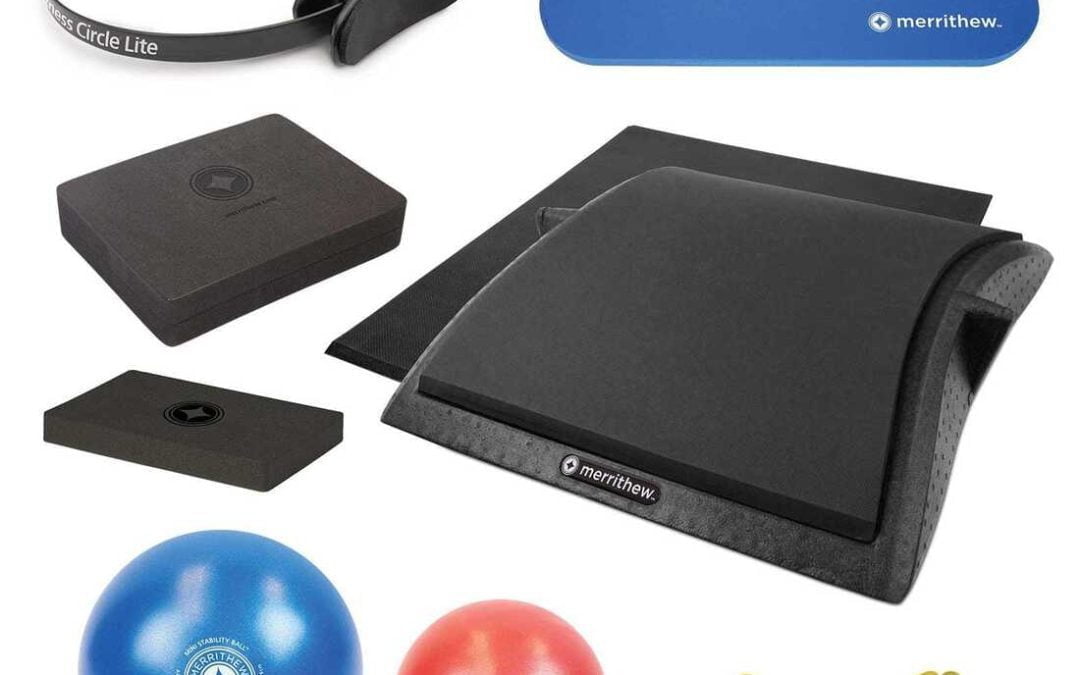Props are for supporting better movement, not just for “challenge”
Here’s the thing I’ve been thinking about a great deal: are we focused on improving movement quality, to make it all more effective and efficient, or are we just looking to offer more and more challenge without the quality of movement in place first?
Before, in my mat classes, I would often throw in props to make it more fun. And don’t get me wrong, props can be fun. I’m a big believer in making Pilates fun. We did foam rollers one week, and magic circles the next, etc… And it’s true, these tools provide a good challenge and often change the dynamics of the exercises- ie. challenging stability or adding more stretch or providing resistance… However, it isn’t necessarily going to help with progression, if you aren’t aligned properly or moving well in your spine. It’s just going to make an exercise harder, which isn’t always the best thing for your body.
In my studies we looked at props from a completely different viewpoint- how to use them as a way to support alignment and provide feedback to encourage good movement. BAM! Mind blown.
For me personally, I discovered that raising up my head and shoulders onto a pillow or arc barrel allowed me to connect with my abdominal wall. In the past, I would have thought it was “cheating” to prop up my head and shoulders for abdominal work. Instead, it made everything that much more doable for me AND made it possible to engage the muscles that needed engaging. That’s using a prop to develop that efficiency factor in your workout, and it does this by moving the bones into a space where the muscles work properly. It’s such a simple way to help make movement better and safer.
I should add here that I have an abdominal diastasis, which got a lot worse after the birth of my second child, and although I had been careful not to make it worse, I didn’t find I was getting stronger, and I was at a bit of a loss as to how to help myself through it. This simple adjustment of changing my supine position with a pillow made it possible for me to gain back strength and function- I never thought I would be able to do upper level exercises again, but here we are! Yay!
Near the end of the course I was feeling much stronger, so I stopped using that support under my shoulders and head. But, as my teacher reminded me, it’s actually the way the bones align that is the benchmark I should be measuring, not the muscle strength alone. So I added it back in and, guess what, I’m moving with more ease and more flow and control because of it. I don’t strictly need it anymore for abdominal work, but it helps, so why wouldn’t I use it? My spine and my ribcage aren’t going to realign quickly, or possibly never. But my muscles can engage and help hold my bones in a better spot, with ongoing practice. The prop helps me work towards this goal.
So, in class I’m now thinking about ways to use props to help support people. If I give you a prop it’s for a reason- It’s because I want to help your body find a way to work smarter, not necessarily harder. Let’s get the basics down before adding more challenge! That’s simply how to progress quicker and without strain or injury. It’s just good sense.
Joseph Pilates said: “A few well-designed movements, properly performed in a balanced sequence, are worth hours of sloppy calisthenics or forced contortion.”
I agree completely, and I’m excited that I’m finding more ways to help people refine their movements with the use of props.
P.S. An additional note about Diastasis Recti:
I’m always going to have an abdominal diastasis. We are often taught to fear these things. But I can do upper level pilates exercises with it now, and I didn’t think that would be possible before undertaking this course. I can be functional and strong in my everyday life, without back pain. So it’s not actually scary at all. It’s just a thing that happened to my body, from having a baby, like so many other women. If this is a concern for you, and bothers you or causes pain or dysfunction, I definitely suggest seeking help from a professional- a physiotherapist or a qualified pilates instructor should be able to help. I offer private sessions, or I can recommend a physiotherapist or other qualified teacher who I think would be able to help. It’s never too late to address this issue, and there is always something that can be done to help you regain function. Feel free to send me a message if you want to chat about it.
Thanks for reading ! Stay tuned for the next installment, “The use of excessive force for breathwork (and other things)”
(Note: this is the second in a series of blogs reflecting on what I learned in my recent Comprehensive Pilates Teacher Training certification. You can see the first installment here.)Props are for supporting better movement, not just for “challenge”Here’s the thing I’ve been thinking about a great deal: are we focused on improving movement quality, to make it all more effective and efficient, or are we just looking to offer more and more challenge without the quality of movement in place […]


